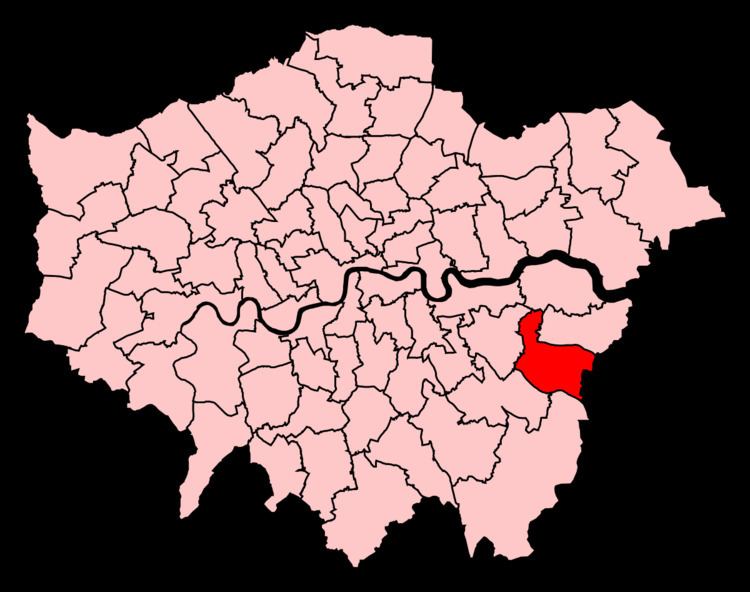Created 1983 | Electorate 65,161 (December 2010) European Parliament constituency London Number of members 1 | |
 | ||
Replaced by Bexleyheath (part), Sidcup | ||
Old Bexley and Sidcup is a constituency created in 1983 represented in the House of Commons of the UK Parliament since 2010 by James Brokenshire, a Conservative.
Contents
History and profile
The seat was created in 1983 by combining a small part of the abolished seat of Bexleyheath, chiefly Old Bexley, with the abolished seat of Sidcup.
On 29 January 2008 the Conservative Party withdrew the whip from the MP Derek Conway following alleged misuse of funds revealed by the MPs expenses controversy, who declined to resign as MP and became an Independent. He retired from national politics in 2010.
Sir Edward Heath, (prime minister of the United Kingdom 1970-1974), held this area (also referring to its main predecessor seat, Sidcup) from 1950 until 2001 when he retired at the age of 85, at the time the oldest MP in the Commons.
The seat has been won at general elections since creation by the Conservative Party candidate. The 1997 New Labour Landslide saw the party's majority fall to its lowest level of 7% of the vote. Its greatest level has to date been 41.5% of the vote — in 1987.
In 2010 the seat was won by the Conservative James Brokenshire, who had transferred to this seat and approved by his local party when his former seat of Hornchurch was abolished in boundary changes. His 2015 result made the seat the 105th safest of the Conservative Party's 331 seats by percentage of majority.
Boundaries
1983-1997: The London Borough of Bexley wards of Blackfen, Blendon and Penhill, Cray, Lamorbey, St Mary's, Sidcup East, and Sidcup West.
1997-2010: The London Borough of Bexley wards of Blackfen, Blendon and Penhill, Cray, Danson, East Wickham, Falconwood, Lamorbey, St Mary's, Sidcup East, and Sidcup West.
2010–present: The London Borough of Bexley wards of Blackfen and Lamorbey, Blendon and Penhill, Cray Meadows, East Wickham, Falconwood and Welling, Longlands, St Mary’s, and Sidcup.
As its name suggest, the seat covers the Bexley and Sidcup areas; it formerly included Danson Park which owing to more development in the south was moved to the Bexleyheath and Crayford constituency.
Constituency profile
Old Bexley and Sidcup has average incomes above the national average, a high proportion of semi-detached and detached homes and low unemployment with a lower than average dependency on social housing.
South London had major factory, ship repairs and dock labour concentrated in Deptford, New Cross, Woolwich, Lewisham and mainstay parts of Battersea, Croydon and Greenwich which contributed to majority family labour union ties forming in the early 20th century to the Labour Party all of which are distanced by this seat in geography and by its suburbanization, triggered by garden-character Commuter Belt construction schemes beside the Dartford Loop or "Sidcup" Line opened in 1866, replacing rolling heath, private park estates and woodland.
In 1848 Bexley (the largest parish) had 3955 inhabitants. In 1797 the central parish of Bexley was described as including or being next to parts of the several seats of Lamienby, Blendon, and Danson, and the several small hamlets of Hurst, Halfway-street, Bridgen, Blendon, Upton, and Welling, or indeed, more properly, Wellend, (which name was given to it from the safe arrival of the traveller at it, after having escaped the danger of robbers through the hazardous road of Shooter's Hill).
Made up of mixed modest and highly affluent suburbia, low-rise and well connected to Central London, Sidcup has been largely developed to neat garden suburb-inspired building schemes for most homes in common with a majority of outer Greater London seats and little of its housing is social housing. The area of Sidcup was agricultural and a local market town during much of the 19th century with its inter-war housing being extensive and mainly semi-detached houses with gardens for City of London commuters. During the eighteenth and nineteenth centuries the area became very popular with the landed gentry and at least four main mansions with large grounds were built in a brief period of these centuries.
